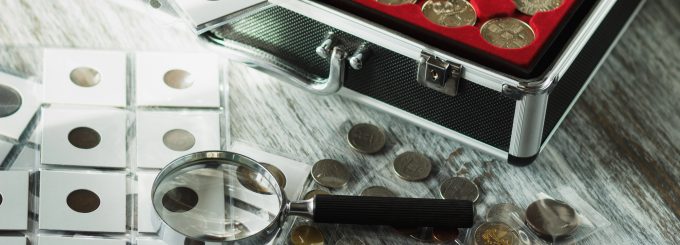Understanding Bullion Coins vs. Collectible Coins

Gold and silver coins may appear similar, but their purpose and value differ greatly. Understanding bullion coin vs. collectible coin distinctions helps investors and collectors make smarter decisions.
Bullion coins are primarily valued for their precious metal content, while collectible coins, or numismatic coins, gain worth from rarity, age, and historical importance. Each serves a unique function in the coin market, shaped by financial goals and personal interest.
Bullion Coins: Value in Metal
Bullion coins derive their worth from the metal they contain. Their value follows the current market price of gold, silver, or platinum. They are well-suited for investors seeking tangible assets with predictable pricing and strong liquidity.
Government mints produce bullion coins in large quantities, which keeps premiums low. Since buyers focus on the metal rather than the design, the coin’s condition has little effect on its price. Their appeal lies in straightforward ownership of precious metals in a universally recognized form.
Popular examples include silver eagles, the Canadian Maple Leaf, and the South African Krugerrand. These coins trade efficiently because their weight, purity, and market value are widely recognized.
Collectible Coins: Value in History and Rarity
Collectible coins, also known as numismatic coins, carry value through rarity, design, and heritage rather than just metal content.
Limited mintages, historical significance, and artistic detail contribute to their higher appeal among enthusiasts. Condition plays a key role in determining their market desirability. Collectors often use grading services such as PCGS or NGC to confirm authenticity and grade.
While bullion coins are easily traded due to standardized pricing, collectible coins involve specialized markets that depend on collector demand. Examples include pre-1933 U.S. gold coins, commemorative editions, and mint errors that tell fascinating stories. These coins combine artistry with historical context, linking craftsmanship to cultural memory.
Comparing Purpose and Liquidity
The bullion coin vs. collectible coin comparison reflects two different investment mindsets. Bullion coins cater to investors who prioritize liquidity and price transparency.
Their value moves directly with the metal market, allowing fast and efficient trading. Collectible coins attract those who appreciate history, rarity, and craftsmanship. Their resale depends more on collector interest and expertise.
Both offer tangible benefits, but their appeal depends on intent. An investor seeking to preserve wealth may favor modern U.S. gold bullion. A collector drawn to artistry and historical narratives may pursue older, rarer coins.
Key Distinctions at a Glance
Bullion coins are high-volume, mass-produced pieces with predictable value based on metal weight. Collectible coins are limited in number and influenced by rarity, design, and preservation. Bullion markets are liquid and transparent, while collectible markets are more specialized. Condition holds little importance for bullion, yet it significantly impacts collectible coins.
This distinction highlights how two coins of similar appearance can occupy completely different positions in the market.
Find Expert Guidance at Coin Exchange NY
At Coin Exchange NY, we understand both bullion and numismatic markets. Our experts help collectors and investors identify opportunities suited to their interests and budgets. From evaluating rare pieces to sourcing authentic bullion, we make every transaction transparent and rewarding.


